Last week post was about my experience with “Double Shot” the half frame camera from Flic Film. If you didn’t read it, I recommend you do so as this post is related, and you can find it here:
Half frame or double shot
On Substack, one person that constantly bring news from the film and film cameras industry is Molly Kate. A few weeks ago she mentioned that the Canadian company Flic Film has a new camera out, a half frame called “Double Shot”. So I jumped ahead and bought one from one of their distributors in London.
In the post I stated that on the same day I brought the half frame camera in the forest, I also had the same type of film (NC-500) loaded on a different camera and the results were different. The comments left (thank you to everyone involved, I love them!) on the post encourage me even more to show a comparision between the results. Oh, I have to mention
and just to make sure they follow the conversation in the comments. The most discussed topic in the comments was the grain of the film, especially when flash was introduced.The second camera that I had with me that day was the FED 5V, a soviet made camera that was the subject of a post in July and you can read all about it here:
Another soviet made
Using a soviet made camera is a totally different experience than using a Japanese or a German one. I think I will tell you about it in a later post and today I will concentrate on the results, aka the photos.
There are differences between those two cameras: the half frame is full plastic, the FED is not (metal, some plastic, glass); the lens on half frame is 28mm, on the FED is 55mm; a fixed aperture of f/8 on the half frame, variable aperture on the FED.
It is worth mentioning that the aperture shouldn’t be taken in consideration as I used the same aperture on both cameras all the time. This being an experiment, the only way to have an accurate (kind of) comparision was to use the same settings. One of the ideas was introducing flash on the half frame compared with no flash on the FED. Also it is imperative to understand that the lighting condition were the same as the photos were taken almost at the same time. For an easier view I put the photos side by side in Photoshop and here are the results:
It is clear to see that when flash was introduced (as an experiment), the grain became unbearable. I will leave here few other photos taken that day with the FED and two notes:
the tones and the grain of the film are beautiful when I used the FED which is not the case with Double Shot. I don’t quite like the sharpness of the FED (I think it’s forced somehow) but that’s a different story. I did have a look at the negatives and I didn’t see any difference between the grainy frames and the rest. I even scanned the frames again with different settings and the results were the same.I will follow
and suggestion and give the half frame another chance with a b&w film. The FED will certainly be the subject of another post.






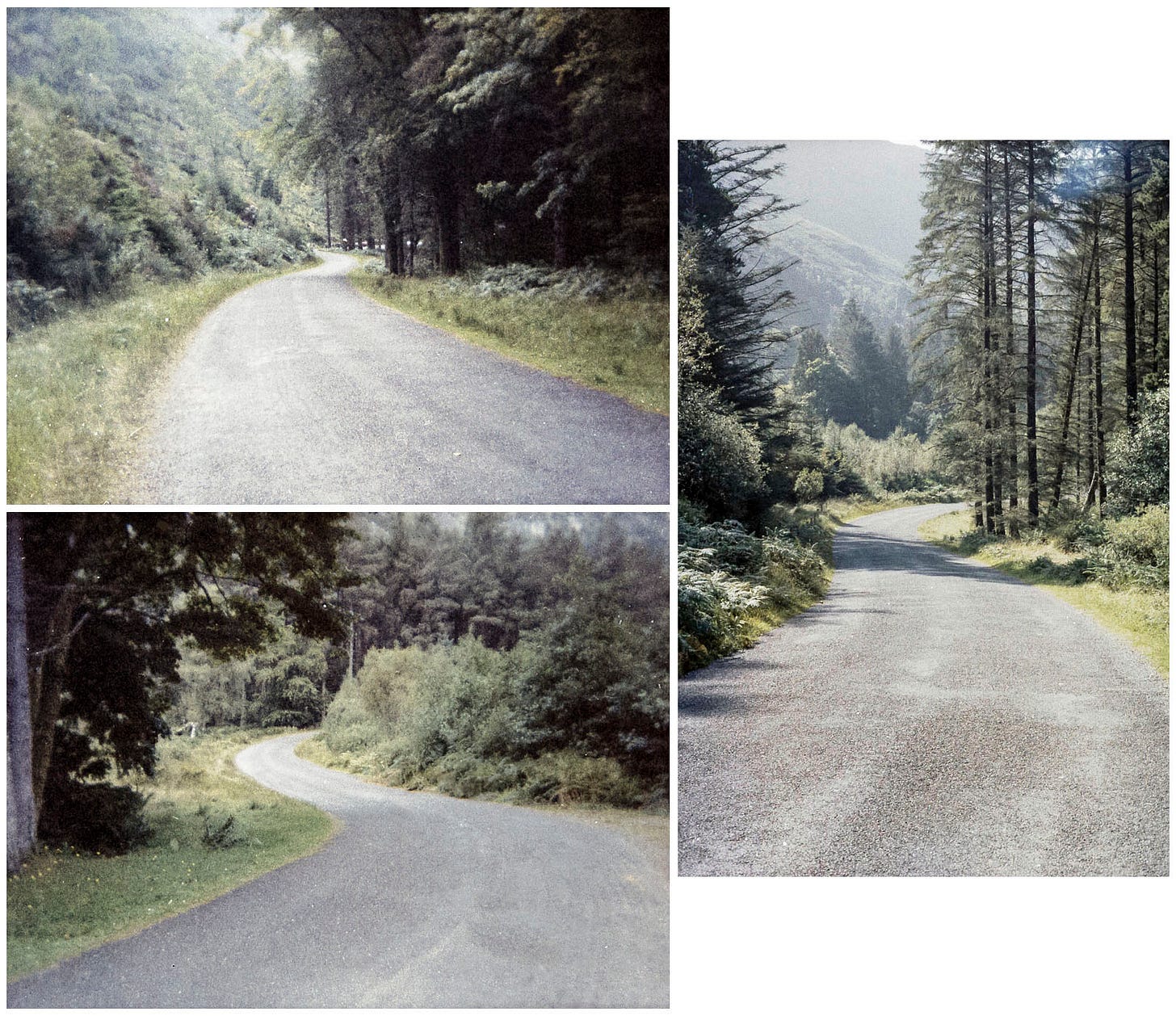
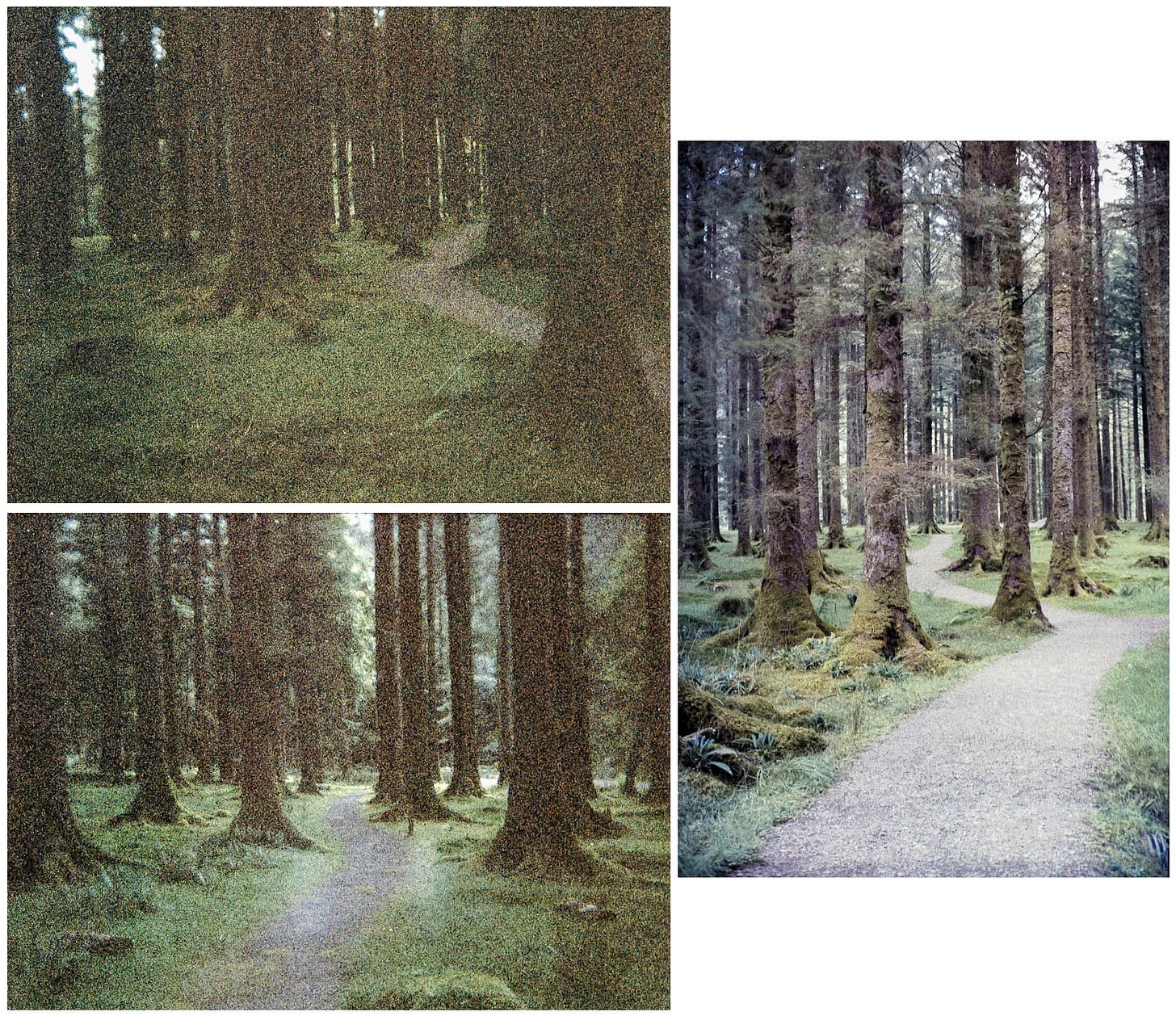

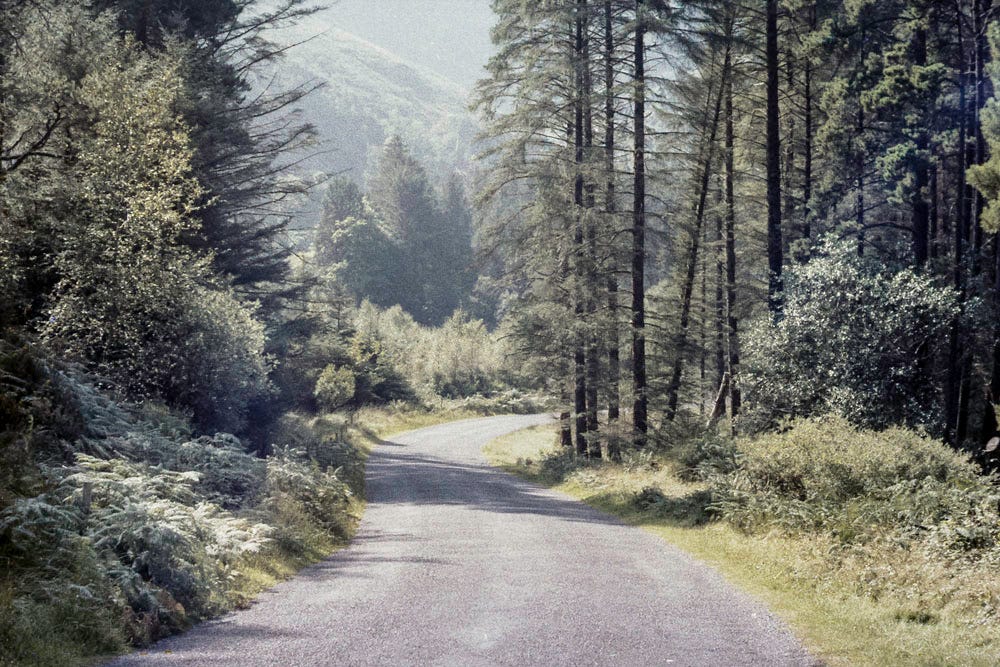
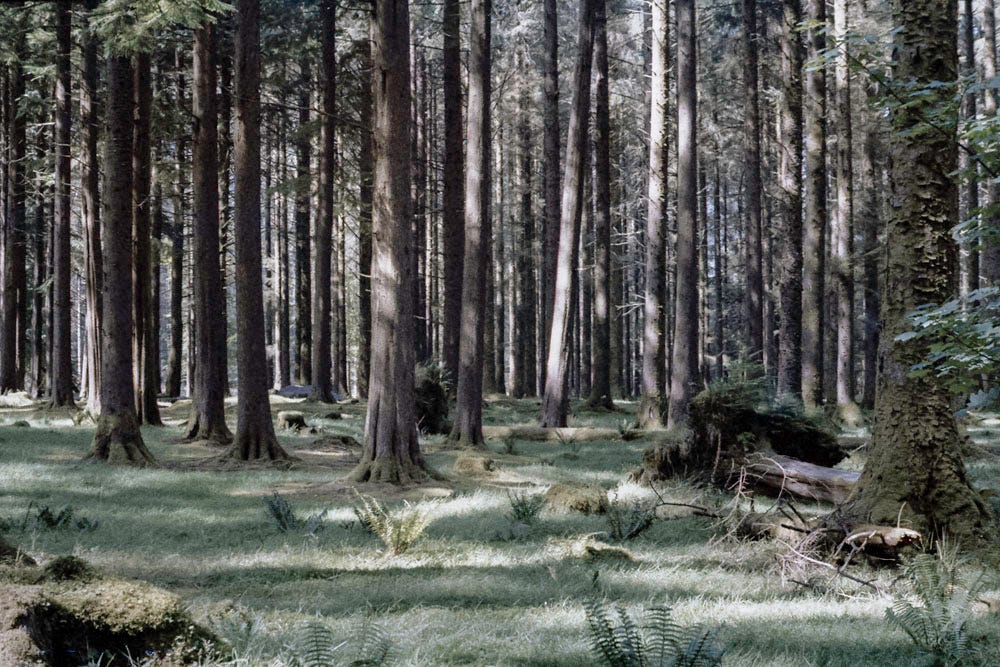
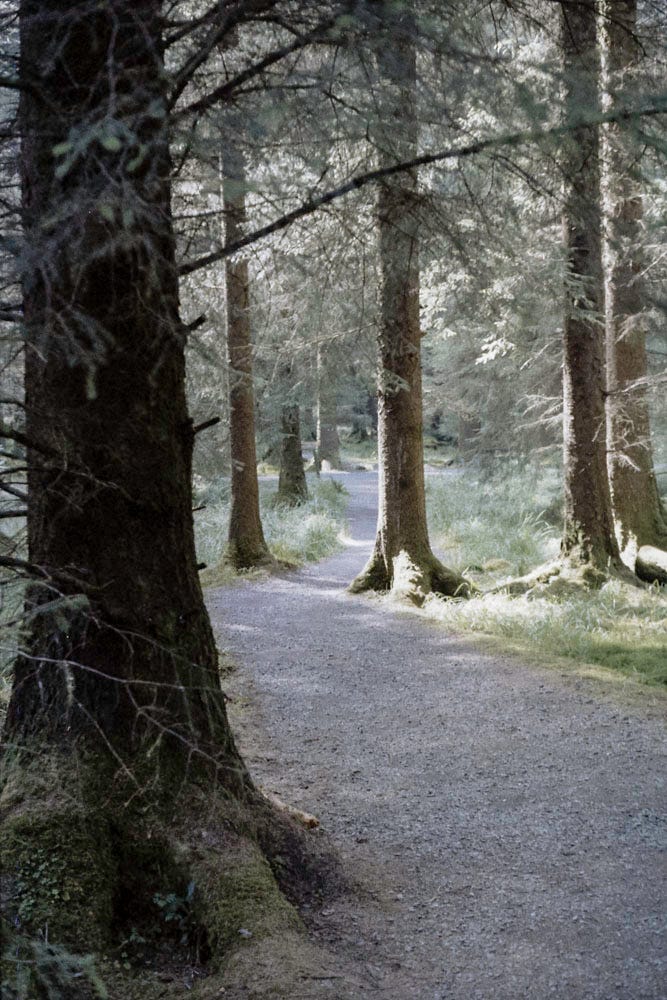


I will be following this. Very curious about the outcome! Not so fond of that grain's character. I haven't experimented much with different stocks like I used to. I stick to Ilford HP5 B&W along with Tri-X and Fuji Acros 100 for BW. I will have to stop being stodgy about my choices :D. And that does look like a wonderful place to shoot woodland photography.
The tones and the grain are beautiful!! I couldn’t agree more. When you used the flash, it is a bit much, even for me.
I think I am even a bigger fan of the tones now. They are so stunning! The very first set is my favorite.
Definitely have to try this film sometime.
Thanks for experimenting, comparing and staring!